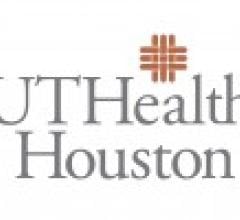
September 3, 2009 – On Tuesday, Aug. 11, an 82-year old New Orleans resident with severe aortic stenosis successfully had a heart valve replaced at Ochsner Medical Center using the same technique as angioplasty, a far cry from the traditional open heart procedure.
Patients who are considered high-risk or nonoperable for conventional open heart valve surgery now have a potential new research option available regionally only through The John Ochsner Heart & Vascular Institute. The center is the only hospital in the Gulf South selected to participate as an FDA investigative site in the PARTNER (Placement of AoRTic traNscathetER valves) clinical trial, evaluating the Edwards SAPIEN transcatheter aortic heart valve in patients who are at high risk for open heart surgery and surgical valve repair.
Annually, some 200,000 people in the U.S. need a new heart valve. "This dramatic new procedure offers a new lease on life for patients with severe aortic stenosis, severe narrowing of the heart valve, and highlights Ochsner's continuing efforts to place patient care first by offering a minimally invasive alternative to open heart surgery which may reduce morbidity and recovery time," said Stephen Ramee, M.D., Ochsner cardiologist and clinical investigator.
The purpose of the PARTNER study is to determine the safety and effectiveness of the Edwards SAPIEN Transcatheter Heart Valve device and delivery systems (leg: transfemoral and chest: transapical). Amazingly, the percutaneous arm of this study makes no cuts in the chest at all. A catheter carrying a tissue valve built into a metal stent a half an inch in diameter is threaded up the artery from the leg to the aortic valve, where it positions the new valve within the damaged one. This procedure is performed in a state-of-the-art cath lab on a "beating heart," without the need for bypass machine, which can pose additional risks. As with any research trial, no guarantees can be made about outcomes. Study benefits and risks along with alternatives are reviewed in detail before a person enrolls.
Ochsner was chosen for the trial due to its expertise in valve replacement surgery and vast experience in interventional procedures. "This is an interdisciplinary study in which Ochsner's cardiovascular medicine, cardiothoracic surgery, and anesthesia departments are working collaboratively, using the best techniques from all three specialties, to advance the standard of care for our patients," said Gene Parrino, M.D., coinvestigator in the trial.
A prospective randomized study, PARTNER has two separate treatment arms. The surgical arm features 690 high-risk patients who are candidates for conventional open-heart surgery. Randomized, these patients will receive either the Edwards SAPIEN transcatheter heart valve or an Edwards surgical valve to demonstrate that the transcatheter heart valve is not statistically inferior to conventional surgery. The non-surgical arm will feature 350 nonoperative patients who will be evenly randomized to receive either the Edwards SAPIEN transcatheter heart valve or appropriate medical therapy in order to demonstrate that the transcatheter heart valve is statistically superior to medical management.


 May 02, 2025
May 02, 2025 








